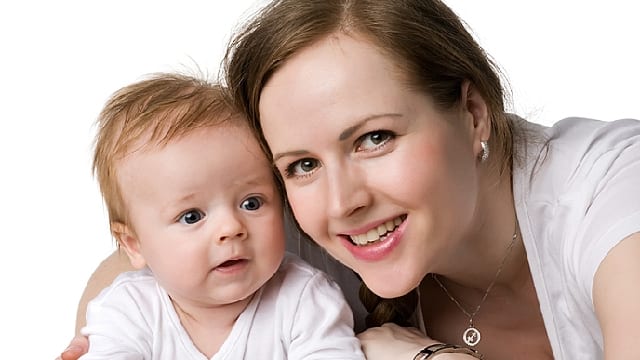Normally, the lip and hard and soft palates grow toward the center of the mouth and join before birth, according to the Centers for Disease Control and Prevention (CDC). A cleft occurs when some of the hard or soft palate or lip don't fuse together correctly. And although most orofacial clefts are identified when the baby is born, a submucous cleft palate may not be diagnosed until later in his or her life.
Identifying a Submucous Cleft
Unlike a cleft palate, which occurs on the roof of the mouth where the hard or soft palate hasn't come together, the palate of a baby with a submucous cleft appears intact. Rather, the Cleft Lip and Palate Association describes a submucous cleft as bony and muscular abnormalities below the surface of the palate. Because it's covered by a mucous membrane, the cleft may look like a notch or depression in the center, according to the Cleft Palate Foundation. In some children, this defect can be felt when examined with a fingertip. For others, physical examination doesn't reveal the cleft. Usually an isolated defect, a submucous cleft sometimes occurs with a cleft lip or a bifid uvula, which is a split in the finger-like projection that extends from the soft palate.
Its Effects on Development
It's not easily visible, but early feeding and swallowing problems can be an indication of a submucous cleft palate. Because of the palate's opening, liquids or food may enter the nose, and infants with submucous clefts are therefore more difficult to feed as a result. The most common reason to suspect a submucosal cleft is abnormal nasal speech due to air escaping through the nose. The abnormal muscle attachments in the palate can also create dysfunction in the eustachian tubes of the ears, leading to middle ear problems.
Treatment for a Submucous Cleft
In general, there are no adverse effects with a submucous cleft and no surgical treatment is necessary. To manage feeding issues, however, parents should work with their doctor and a cleft palate team to learn which special feeding techniques work for them. Ear problems are usually handled by the family doctor as well – or an ear, nose and throat specialist who can provide antibiotic therapy or insert ventilating tubes into the ear drum. Children with speech difficulties are regularly evaluated and treated by speech and language therapists, and in some instances, an appliance made to fit the child's mouth can improve his speech development. Nonetheless, surgical treatment may be ideal if complications persist.
How to Approach Oral Care
Early dental care is important for all children. Although most dentists recommend visiting the dentist around a child's first birthday, a cleft should be monitored by a dental and cleft palate team even earlier. Orthodontists play an equally significant role, evaluating the child's facial growth and jaw development before they even have any teeth in their mouth, and continue to assess their dental needs as primary teeth erupt. Keep in mind orthodontic treatment may still be needed at some point to align the adult teeth later on.
Good home care for any baby starts by cleaning the gums with a moist gauze or washcloth after feedings. As teeth appear, they can be cleaned just the same with a soft-bristled brush. If brushing is difficult because of the shape of his mouth, consider tooth-brushing aids called toothettes, which are smaller items that can desensitize an underdeveloped mouth prior to cleaning or feeding. For kids over the age of two, brushing with fluoride toothpaste should be done twice a day, and when two teeth erupt next to each other, flossing should be conducted as normal.
Parents of someone who struggles with eating, swallowing, hyper-nasal speech or frequent middle ear problems may want to ask a doctor to evaluate their child for a submucous cleft. Early diagnosis and intervention by a cleft palate team can ensure a positive outcome and beautiful smile.
This article is intended to promote understanding of and knowledge about general oral health topics. It is not intended to be a substitute for professional advice, diagnosis or treatment. Always seek the advice of your dentist or other qualified healthcare provider with any questions you may have regarding a medical condition or treatment.
ORAL HEALTH QUIZ
What's behind your smile?
Take our Oral Health assessment to get the most from your oral care routine
ORAL HEALTH QUIZ
What's behind your smile?
Take our Oral Health assessment to get the most from your oral care routine
Join Us
Get the best of your oral health routine and take it to the next level with expert advice, recommendations, products and solutions and special offers.
Join Us
Get the best of your oral health routine and take it to the next level with expert advice, recommendations, products and solutions and special offers.















